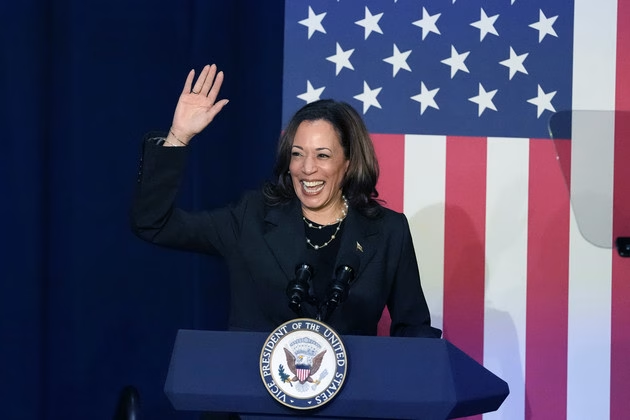Find out which universities are the best for veterinary science in 2024. Who leads the pack? Check out the unchanged top five and Texas A&M’s climb in the QS World Rankings.

In the ever-changing area of veterinary science, prospective veterinarians, educators, and researchers must find excellent educational schools. The QS World University Rankings by Subject 2024 provides a clear insight into the world’s finest veterinary schools, leading students and professionals to success. The Royal Veterinary College in the United Kingdom, which serves as a model for other schools, continues to lead by providing excellent teaching and research. The top five universities remain stable, demonstrating their enduring supremacy and their global impact. Texas A&M University has moved up four spots to the top ten, a testament to its growing influence. These rankings reflect the schools’ continual progress and the quality of education they provide, inspiring a global community of veterinary professionals. Keeping up with these advances is critical for promoting innovation and quality in animal health and welfare.
| Rank | University | Country |
|---|---|---|
| 1 | Royal Veterinary College | United Kingdom |
| 2 | University of California, Davis | United States |
| 3 | Cornell University | United States |
| 4 | Utrecht University | Netherlands |
| 5 | University of Sydney | Australia |
| 6 | University of Glasgow | United Kingdom |
| 7 | Texas A&M University | United States |
| 8 | University of Cambridge | United Kingdom |
| 9 | University of Edinburgh | United Kingdom |
| 10 | University of Pennsylvania | United States |
| 11 | University of Guelph | Canada |
| 12 | Rijksuniversiteit Groningen | Netherlands |
| 13 | Ghent University | Belgium |
| 14 | University of Queensland | Australia |
| 15 | University of Copenhagen | Denmark |
The Definitive Guide to Excellence in Veterinary Science
The QS World University Rankings by Subject is a prominent yearly publication that recognizes outstanding institutions in various academic subjects. QS rates universities based on four significant metrics: academic reputation, employer reputation, research citations per publication, and the H-index, providing a thorough picture of educational achievement in each discipline. These personalized measurements give information about each subject’s distinct traits.
The QS World University Rankings by Subject 2024 are of immense significance in the field of veterinary science. They set a standard for prospective veterinary professionals, educators, and researchers by highlighting institutions that excel in education, research, and industry impact. These rankings are more than simply a list; they serve as a tool for academic and professional groups looking to invest, grow, and plan strategically. They promote top-tier veterinary education and research, encouraging a culture of excellence and healthy competition.
Leading the Pack: The Prestigious Royal Veterinary College in the UK
The prominent Royal Veterinary College in the United Kingdom is at the forefront of the field, renowned for its groundbreaking research and extensive curriculum. This university is distinguished by its academic rigor and devotion to the public good, ensuring that graduates are equipped to face global veterinary concerns. The University of California, Davis, is rated closely. UC Davis, known for its cutting-edge facilities and extensive clinical training programs, continues to draw top-tier talent from all over the globe, aided by its strategic position in one of the leading agricultural states in the United States. The University of Edinburgh in Scotland is next in line, with a historic veterinary school and a strong reputation for scientific brilliance. The institution’s focus on multidisciplinary cooperation and innovation guarantees its students a comprehensive, cutting-edge education. The University of Utrecht is among the top five, known for its emphasis on theoretical and practical sciences. Its collaboration with industry and government groups further solidifies its European veterinary education and research leader position. The University of Sydney, known for its pioneering work in veterinary science, completes the top five list. The university’s holistic approach combines academic quality with practical experience, equipping graduates to handle the challenges of contemporary veterinary practice with expertise and confidence.
Texas A&M University’s Remarkable Ascent: A Beacon of Excellence in Veterinary Science
Texas A&M University, long known for its robust Veterinary Science department, has risen in the QS World University Rankings by Subject 2024, indicating its rising popularity. The university, which climbed four spots to seventh position, combines academic excellence, creative research, and active community involvement. The comprehensive program addresses current animal health concerns by integrating cutting-edge research facilities and hands-on clinical experience.
The Veterinary Medical Teaching Hospital is crucial to its success, providing a leading clinical teaching platform. This cutting-edge facility enables students to work on various veterinary health concerns while receiving professional supervision. The institution conducts research ranging from fundamental science to practical clinical investigations in epidemiology, infectious illnesses, and sophisticated surgical procedures.
Texas A&M’s growth is driven by its collaborative research environment, dedication to inclusion, and alignment with worldwide veterinary standards. These initiatives recruit a vast talent pool and encourage academic and professional success, establishing Texas A&M as a veterinary education and research leader.
Other Leading Institutions in Veterinary Science: Highlighting UC Davis, Cornell, Utrecht, and Sydney
The University of California, Davis (UC Davis), one of the top institutions in the QS World University Rankings by Subject 2024 for Veterinary Science, stands out for its cutting-edge research and cutting-edge facilities. UC Davis’ curriculum includes small and big animal veterinary professions, attracting students worldwide to its prestigious school.
Cornell University follows UC Davis, which is known for its challenging academics and creative teaching. Cornell’s College of Veterinary Medicine is known for its research achievements and unequaled Veterinary Teaching Hospital, which offers excellent hands-on learning opportunities.
Utrecht University in the Netherlands retains its position via excellent clinical training and multidisciplinary research. The Faculty of Veterinary Medicine here is known for its emphasis on One Health, which integrates human, animal, and environmental Health while educating students about complicated contemporary veterinary concerns.
The University of Sydney in Australia is especially significant since it provides an internationally approved degree that integrates conventional education with animal health and conservation. The Sydney School of Veterinary Science stands out for its research connections and commitment to global animal health.
The Bottom Line
The QS World University Rankings by Subject 2024 is instrumental in helping students and professionals make educated educational and career choices. They assess institutions’ capabilities, resources, and worldwide reputation, and highlight the pinnacle of veterinary science education. These rankings emphasize the Royal Veterinary College’s continuing supremacy in the United Kingdom and Texas A&M University’s rise to the top 10, while spotlighting elite universities such as UC Davis, Cornell, Utrecht, and Sydney. These ideas demonstrate academic brilliance and essential contributions to veterinary medicine. We invite readers to review the complete rankings and examine these top colleges for their educational goals. Aligning with premier colleges means connecting with the pinnacle of veterinary expertise and innovation.
Key Takeaways:
- Royal Veterinary College (UK) maintains its position as the top-ranked veterinary science school globally.
- Texas A&M University makes a significant leap, moving up four places to secure the seventh spot.
- The top five rankings remain unchanged, demonstrating consistent excellence among leading institutions.
- Renowned institutions such as UC Davis, Cornell University, Utrecht University, and the University of Sydney continue to feature prominently, underscoring their sustained contributions to the field.
Summary:
The QS World University Rankings by Subject 2024 highlights the top institutions in veterinary science, with the Royal Veterinary College in the UK leading the way. The top five universities remain stable, demonstrating their global impact and enduring supremacy. Texas A&M University has moved up four spots to the top ten, demonstrating its growing influence. The University of California, Davis, the University of Edinburgh, and the University of Utrecht are all renowned for their cutting-edge facilities, extensive clinical training programs, and emphasis on theoretical and practical sciences. Texas A&M University’s Veterinary Science department has risen in the rankings, indicating its growing popularity. Other leading institutions in veterinary science include UC Davis, Cornell University, Utrecht University, and Sydney. Aligning with premier colleges means connecting with the pinnacle of veterinary expertise and innovation.












